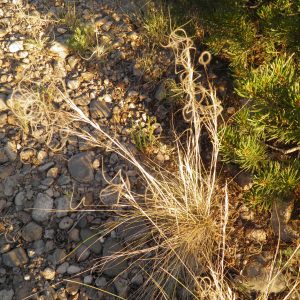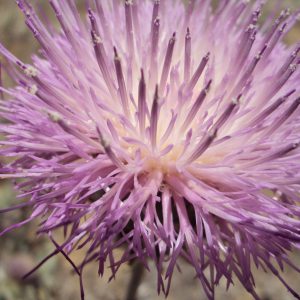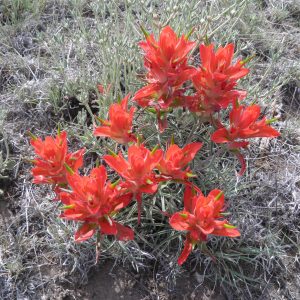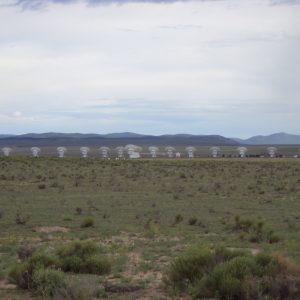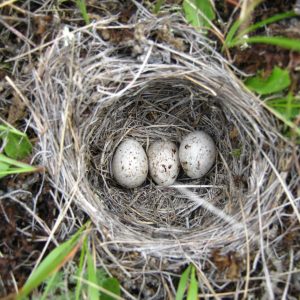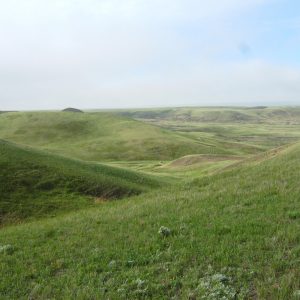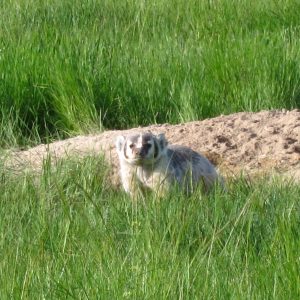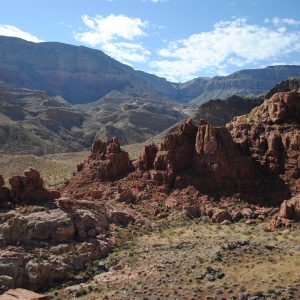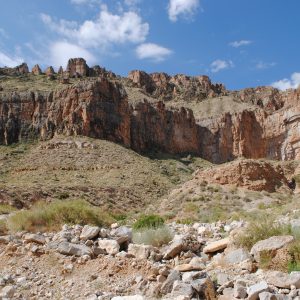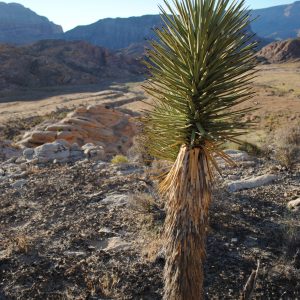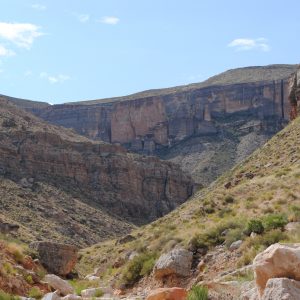The talk and rumors of this land that blow over the Rockies toward my native home are scarce. Usually they are not enough to pry the average Midwesterner contently secure next to the river and bring up their roots into hot dry sun waiting for them in the rain shadow of the Sierras.
So, when I decided to take this position many of my friends and relatives had one thing to say, “Utah”?
This I had to find out for myself for several reasons layered beyond the scope of this blog. It turns out that there were good reasons to come here, many of them more valuable than the promise of a paycheck.
If you like plants, it turns out this is good place to start. The paucity of water had quickly diverged many species into various niches that cling in the cracks of hot sandstone, or lay open in the meadows of the cool mountains.
Being in this atmosphere it as if your essence also starts to gather its unique characteristics and pushes them to the surface, either out of necessity or nature I am still deciding.
The work presents itself as it needs to be done. My main task is in the seeds of success program. This gives me the perfect opportunity to learn the language of the land that I am traveling. You start to gather the geology, water, sun and time paint the desert with hues remarkable and beyond descriptors.
It is unique but often treated as if not so. The landscape is sustained by extremes, hot and cold, fire and ice, day and night. Our activity threatens to toss aside the reality of this nature for the sustenance of golf courses and neon decor; artifacts of bygone era. The lessons of sustainable living and equity will be a central focus that may blossom here first and catch wind to other areas that are desperate need for real change.
Some things the desert as taught me.

Monthly Archives: August 2010
Camping, Inspections, and the First Collections
This past week was my twelve week of adventures in the south to central, western portion of New Mexico. That’s right, the borders of our SOS collection region are rather loosely defined, but with good reason. Our explorations have taken us to many BLM-managed bordering areas of the Colorado Plateau in this state. The reason for this being that populations transitioning from one ecoregion to another often possess survival-enhancing genetic qualities that increase the chance for success when using their germplasm in restoration efforts. Nifty little tidbit of info, especially given an uncertain climate future, one that may entail widespread changes in ecosystem conditions currently and historically equilibriated to make habitats tolerable for native plants. Pretty important.
Speaking of climate, the weather in this part of New Mexico has been changeable enough for me to actually consider writing this blog as a lyrical poem entitled “Ode to Climate Dynamics.” Given the dramatic swing from cool spring nights to 105 degree heat, the arrival of flash flood advisories, knock-your-socks-off winds, and torrential downpours (otherwise known as the North American Monsoon) has actually been a blessing in disguise, bringing cooler temperatures and cloudy skies. Besides, life is not about waiting for the storm to pass…ah, you known the rest. Just try not to get hit by a bolt of lightening while you’re dancing in the rain.
So far, we’ve ventured to just about enough blocks of accessible BLM land to represent our entire region. The trick to finding both high diversity and abundance appears to be finding locations that are not as accessible to grazing and that have received adequate rainfall within the past several months. Some of the most promising areas include those along the Quebradas Byway (just east of Socorro), several near Pinos Altos and Gila, NM, and a few in Walnut Creek (southwest of Socorro). Most weeks, we go out into the field for four days and camp to save travel time. I’ve seen and experienced an amazing array of landscapes the likes of which I have never encountered in the twelve years I have lived here, ranging from the Chihuahuan Desert with its wildlife and associated nighttime hisses, hoots, and screeches to the Gila Wilderness with nights so quiet that your ears buzz. And still, no matter where I am, the concept of seeing stars not obscured by city lights is a dim thought in the background when faced with the actual sight itself.
This is the first twelve weeks of the first year of the SOS team out of Los Lunas, NM and this is my second post. These two have one thing in common, aside from the initially hilarious and newbish attempts at coordination of efforts toward a meaningful output on my part.
Growth. That’s what they have in common. This internship has contributed not only to a constantly pooling reservoir of experience-based knowledge of botany and, more specifically, botany in this area, but also to an immeasurable amount of character growth. It almost sounds cliche, but it must be said. So far, much of our work has involved building a strategy from the ground up, and it has proven confusing and often frustrating at points, but we are met with much success. Luckily we have had an incredible amount of assistance from several highly-skilled individuals at the Chicago Botanic Garden and mentors involved in SOS teams in different parts of the state. If you’re reading this, you know who you are. Much thanks, we are in your debt.
And how is growth related to this blog? Well, I guess…I have more to say than last time…
But, back to the point, since we’ve begun, we have developed a database of hundreds of identified species of plants we’ve observed at over forty sites and have collected vouchers from. Having this information has allowed us to narrow our focus to the most accessible sites with the highest likelihood of multiple, large collections. The herbarium at the University of New Mexico, with their enormous collection of specimens, has been exceptionally helpful toward this goal. A grip of what is out there and where it is was something we lacked initially. And now that we have it, monitoring these populations and returning at the right times has been much more straightforward. Thus far, we have made three collections (Hesperostipa neomexicana, Phacelia integrifolia, and the ever-abundant Chaetopappa ericoides.) We have our eye on some other species that align with a priority list we’ve compiled based on the intel of several of the area’s leading botanists (again, thank you.) So far, we haven’t observed any populations of these species that are ready for collection. It almost seems as though this year, seed production has been a bit delayed or lengthened. I suspect this has something to do with the heat wave that occurred during the months of May, June, and July this year and perhaps also with a slightly-delayed monsoon season.
However, this past week we visited several sites west of Quemado, NM just outside the Apache-Sitgreaves National Forest on some surprisingly un-cow-burnt BLM land, and several of the populations we observed there are very close. The seed is still a little soft and we will return soon.
We have also been fortunate to obtain a permit to collect in the Santa Fe National Forest, so next week we will head up to forest service-managed land near Cuba, NM to see how things are progressing there and, hopefully, find some germplasm that is ready to be collected.
Tessia Robbins
Los Lunas PMC, NM
- Hesperostipa neomexicana (New Mexico feathergrass)
- Cirsium sp. (Thistle)
- Castilleja integra (wholeleaf indian paintbrush)
- Very Large Array (VLA) near Socorro, NM
Spring time done the Wyoming way, Rock Springs
Greetings from Rock Springs, WY! I’ve been here now for a few months and as I reflect on what I’ve accomplished I’ve realized that it’s a new season for me and I’m glad that I’ve spent it doing the Seeds of Success program.
Spring time is always a time of new beginnings and growth. I feel like my life has been paralleling this wonderful time of year. This internship has allowed me to grow and start off in the best direction possible. It really is a job that will help to shape you and send you on your way. I can see how the experiences I’ve gained here will help me in the future. These internships will help you to become more confident in yourself and will help you get an up close look at what you would like to do with your life.

They call this the birthing rock. They think the hand prints are from years of Native American women coming to this rock and placing thier hands on it while giving birth.
So far I’ve been here for over two months and I’m having a really great time. My job consists of driving to areas of large plant populations and collecting seeds. While out and about on these dirt roads you never know what you will come across. (I’ve seen so much wildlife, not to mention the wildflowers! I also had to change a blown tire one day and pull out a man who had gotten himself stuck.) The BLM employees have also been a big help. I’m not an expert (yet) so sometimes it’s frustrating coming up with big enough plant populations and finding areas. Several of the staff here have come up to my partner and me and pointed out spots to us that they have found. It has been a huge help and has kept us really busy.
If you are thinking about this internship, but are having some doubts. My advice is to just apply, just do it! My experience so far is that I have great roommates and a great place to stay, the people you work with are nice and will help you out. You will never have a better opportunity to experience the outdoors, improve/ test yourself, and learn skills that will help you in your future. Everyone you will work with wants you to succeed and you have it within yourself to make this an amazing opportunity. I’ve come to love this area and I know that I will miss it when I leave. Here’s to many more spring times in my life,
Glasgow, not Scotland
I have been in Glasgow, MT for two months now, and they have just flown by. My co-workers are a great group of people, which is good since we spend hours driving out to field sites and working side by side. So far our main projects have been mountain plover surveys, grassland bird surveys, and habitat assessments. Although I have prior birding experience, plants have never been on my radar. I was very surprised how quickly I was able to learn the different plants, and how I have already latched on to a few favorites (pussytoes and scarlet globemallow, anyone?) It has been so amazing to be out on the endless prairie, sighting antelope, deer, badgers, snakes, foxes, coyotes, and many different birds, including the beautiful golden eagle. Although I grew up in Edmonton and so have a soft spot for the prairies already, I’ve never been so immersed in it.
Aside from the field work, I’ve loved experiencing the cowboy culture here. I’ve been to my first rodeo, my first mud bog, my first barn dance, met my first real life cowboys, and listened to hours and hours of country music. I’ve loved being able to travel around a bit and see more of the vast state of Montana. I want to take everything I can from this experience of living and working in a different country (even though Canada is only about an hour from me).
Lauren Wiebe
BLM Field Office, Glasgow, MT
Adventures with hummingbirds, sage grouse and fish
This month we had the pleasure of helping several different agencies on wildlife projects. One of the most unique experiences I had was with the National Parks Service. We were able to band hummingbird at Bryce National Park. Feeders with netting bunched around the top were hung and observed for 5 hours. When a hummingbird landed on the feeder, a line was pulled that released the netting so it would fall around the feeder and hummingbird. My most exciting moment of the day came when I pulled the line and captured a rufous hummingbird. Next I loosely close my hand around the hummingbird and placed it in a netted bag. The bag carrying the bird was then brought to the processing table where measurements were taken and the bird was banded (with the smallest band ever seen).
We were also lucky enough to help the Utah Division of Wildlife run a M.A.P.S (Monitoring Avian Productivity and Survivorship) station in Santa Clara, UT. Using mist nets we were able to capture birds along a riparian area. After removing the birds from mist nets, the birds were banded, aged, sexed and several measurements were taken.

Next month, I will be aiding the Forest Service with a fish survey. This will include electroshocking the fish (they are stunned, not killed), scooping the stunned fish up with nets and taking length and weight measurements. More is to come on this topic in my next blog 🙂
Besides assisting other agencies, my fellow intern Brittany and I continue to monitor sage grouse habitat. Today, we flushed up three greater sage grouse while enroot to one of our sites. At another site, we identified greater sage grouse sign.

Our future endeavors with the BLM include the Wild Horse and Burro Adoption, riparian assessments, mule deer monitoring, digitizing sage grouse sighting and raptor nests and more. Until next time, I hope everyone is enjoying their internship!
Michelle Downey
Cedar City, UT
BLM
Rawlins, Wyoming
It’s going on my fourth month now in Rawlins, Wyoming as an amphibian intern. Since my last post, there have been many more frogs/toads and many more interesting experiences. The weather has finally gotten better. The snow eventually stopped and the sun has finally come out to stay.
My daily work schedule has involved driving around the Rawlins Field Office searching for amphibians. I have had the privilege of seeing many different types of frogs/toads including spadefoots, chorus frogs, northern leopard frog tadpoles, and even the occasional salamander. Aside from these awesome amphibians, it’s been common to see baby antelope, wild horses, and even a young badger on our surveys.
As for the landscape out here, there has been mud, giant playas, and rocky/cobble roads. I even managed to get stuck in a muddy playa. I managed to get out, but lost my wader boots in the process. The bugs have also been an obstacle this year; bug spray kind of does the trick, but constant swatting is the only way to guarantee a limited number of bites. However, these obstacles are a small aspect of the exciting work I get to take part in here.
I look forward to witnessing more of Wyoming’s wildlife as I finish out my internship position these next couple months.
Talk to you later,
Jackie Taylor
Rawlins, Wyoming
Owl show you a good time
I couldn’t help but make an Owl pun at a time like this! We have begun our Mexican Spotted Owl habitat surveys here at the field office in St. George, UT. This entails leaving the office at 6:00 or 7:00 in the morning in order to attempt to beat the heat, which doesn’t ever happen no matter how early we start. Maybe if we left the office at 3:00 AM it would stay below 100 during our nine hours in the field. Maybe. Needless to say, it’s HOT. But the weather is predictably beautiful, something that I really appreciate coming from the notoriously unpredictable Pacific Northwest.
What are we doing out there? We’re really looking for “cool microsites” — spots in canyon caves and crevices or ponderosa pine forests that would provide the owls with a spot to nest and forage where it stays shady throughout the day. I can relate to the owls in this desire for consistent shade, that’s for sure. Although we haven’t spied any owls yet (they’re not exactly common), I’m confident that by the end of my five months we will. Or at least hear a shy hoot. However, our trips have not been devoid of wildlife. We’ve come across a pair of Red-Tailed Hawks soaring along canyon walls, a lone Northern Harrier crying out in the distance, plentiful riparian songbirds catching bugs around a canyon spring, and some really cute Red-Spotted Toads.
It’s been tricky work, and I’ve had my share of complications, including heat exhaustion and a sprained ankle. But despite the difficulties, the remote locations we have had the chance to see have been pretty spectacular. These are spots that are not easily accessed on foot, let alone convenient for driving. They require a lot of washboarding and use of 4-wheel drive, then clambering up steep sandy hills to get a decent view. It’s quite the adventure! One thing in particular that I have noticed about Arizona is its tendency for spiky plants. Literally everything growing here has spines, spikes, prickles, burrs, or something else sharp that will get stuck to your socks and stick you when you’re least expecting it. It makes sense to me, though. A harsh environment calls for equally harsh methods of dealing. I’m always quietly panicking that I will trip and fall on a Joshua tree, though. I have a theory that those branches (leaves? What are they?) would impale me if I fell at just the right angle. Luckily, that’s a pretty ridiculous theory.
So, as the summer presses on, we will continue with our surveys right into the monsoon season (yep, there’s a monsoon season!!!) and beyond. I can’t wait to see what else Arizona has to offer!
Laurel Mundy
BLM
Arizona Strip, AZ
& my journey continues…
Well I’m a little over halfway into my internship here in Cedar City, Utah, and it’s been quite a ride so far! Aside from performing habitat assessments and using radio telemetry to locate greater sage-grouse in the challenging desert environment, I’ve also been fortunate enough to help with prairie dog trappings for plague studies, conduct Mexican Spotted Owl and nightjar surveys in beautiful canyons, assist with avian mist-netting in Santa Clara, learn how to band hummingbirds in Bryce Canyon, become ATV-certified, and attend the amazing CLM Workshop at the Grand Canyon! The lessons I learned and the experiences I shared at the workshop are ones that I will always remember 🙂 A BIG THANKS needs to go out to everyone who helped organize that trip, especially to Krissa and Marian! It was great meeting some of my fellow interns and getting to see such beautiful places. I felt like I grew a lot during that week and am truly honored to have been a part of it.

A group of us interns on Shoshone Point in the Grand Canyon! A brief storm had rolled in & left us with that stunning rainbow.
During my time here at the BLM Cedar City Field Office I’ve really enjoyed the variety of tasks involved with this position. My co-worker, Michelle Downey, and I have helped other field groups with their project clearance evaluations, vegetation transects and prairie dog surveys. It’s great to see the other project areas and get a feel for the different aspects associated with this job. Having a broader understanding of the research that goes into saving our wildlife is one of the best things I could take away from this journey. I’ve always been a firm believer in preserving natural resources and working towards species survival, but now I’m learning the more productive ways of achieving those goals.
Coming up in the next couple months, Michelle and I will collaborate with other BLM employees and complete Riparian Proper Functioning Condition assessments [PFC] among other assignments. I really like doing PFC assessments since we get to spend our days admiring beautiful streams and monitoring their form and function. We’ll also get to work with rangeland health teams and check out soil trends and keep track of the wildlife use on such lands. Carrying out Little Creek Fisheries stream surveys, where we’ll be tracking perennial streams and fish populations, is also on our agenda. Later this week we’ll be volunteering with the Cedar City Wild Horse Adoption and I’m super excited about spending time with such gorgeous animals! I hope many become adopted and live amazing lives…I love that I could have something to do with making that happen. Eventually we could also be performing pygmy rabbit surveys which I think would be so much fun! As you can tell, I’m really embracing every opportunity that has come my way out here in the beautiful West!
Best,
Brittany Stanglewicz
Seasonal Wildlife Technician
BLM – Cedar City Field Office
July in Cody, WY
The end of June finally brought some warm weather to Cody, Wy. Spring has been long, cool and wet this year. The range really shows the effects of the weather. The spring green-up was much delayed and now in July many areas are still very green, whereas in drier years, many plants would begin to brown in late June.
I have continued with the fence inventory I started when I first arrived in Cody. You wouldn’t believe the number of fences on public lands. Even though the Cody Field Office isn’t that large, compared to other Field Offices, 1.2 million acres, inventorying the fences is a daunting task. At this point, many of the crucial pronghorn areas have been inventoried and problem fences have been identified for future removal or modification. I feel very fortunate to be assigned the fence inventory. While it doesn’t take much skill, it gives me ample opportunity to become familiar with the entire field office, as well as the opportunity to observe wildlife and vegetation. Of particular interest is the geographic and topographic variation and variability of vegetation.
I have learned to identify most of the vegetation on the range and some of the more conspicuous plants at high elevation in the mountains. As the grass began to green in June, I began working with the range conservationists conducting vegetation monitoring for both grazing and wildlife purposes. Primarily the monitoring consists of permanent point intercept transects read yearly to assess trends in rangeland condition. Additionally, we have been collection data on sagebrush and residual grass canopy for sage grouse cover.
Working with the range staff has been a learning experience in itself, very different from working with wildlife biologist. It has given me the opportunity to barrage the range cons. With questions about grazing, overgrazing, trespass cows, fences, conservation, range improvement (water tanks, seeding, weed removal, and prescribed burning) and the grazing permit system. Additionally, I have worked with the Wild Horse Specialist and have begun to understand the many issues surrounding wild horses on public land.
I have also been working on finding and inventorying certain rare plants in the Field Office. I had the opportunity to work with the local botanical expert and well known botanist.
Jason Clark
Cody, WY
BLM

